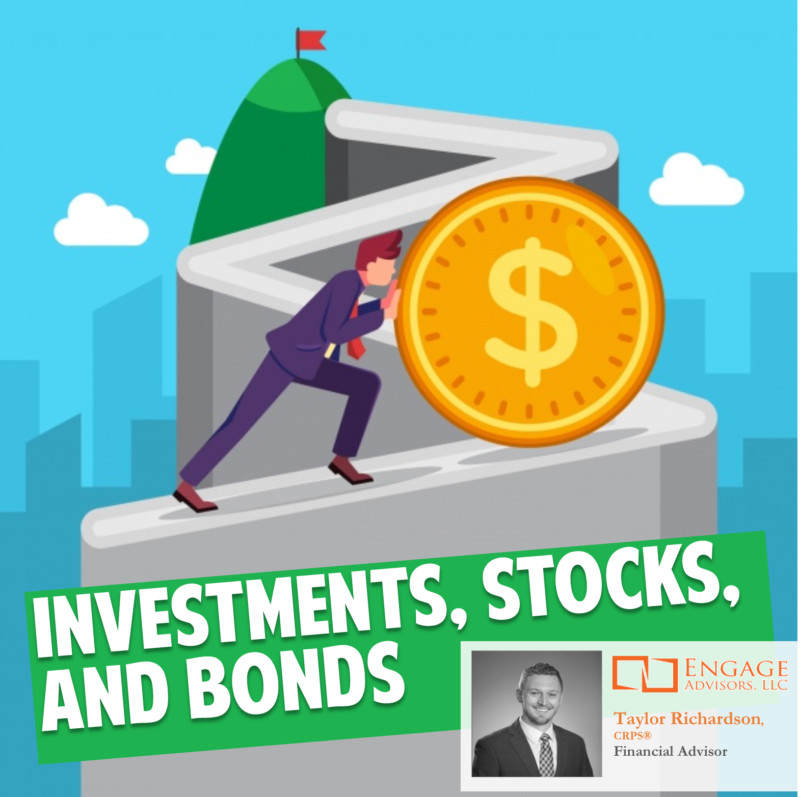What is an investment?
The simplest definition of an investment is – giving up current consumption or compensation for the opportunity for larger consumption or compensation at a later date. To invest we must start with some basic questions. How long am I willing to forgo current consumption for an opportunity at higher consumption in the future? (Time Horizon) How much of our current consumption are we willing to risk turning our future consumption into a larger amount? (Risk Profile) What do we need or expect our future consumption to grow at? (rate of return) What can we invest our current compensation in to increase our compensation in the future? (investments, asset classes, investment vehicles)
Today we tackle the most common asset classes and investment vehicles.
What are Stocks?
Stocks are an ownership share in a company or corporation. There is no contractual obligation for a company to pay us even though we own stock in the company. How we make money or increase future compensation through stocks is when a company does well in its industry, the company Capital gains value. When the company gains value the shares or stocks of the company increase in value. When we sell those shares to someone else at a higher price than what we initially paid we have made money. Since there is no contractual obligation for the company to pay me, there is a higher amount of risk associated with stocks than other investments such as bonds. We would be willing to take on this risk in expectation of receiving a higher rate of return on our investment.
What are Bonds?
Bonds are a contract between a borrower(issuer) and the investor. A bond requires the issuer to pay us the investor an agreed upon amount. If the borrower does not pay, they are legally in default and have legal ramifications that will ensue. Income from bonds is known as a coupon, they typically pay these coupon amounts semi-annually or quarterly. To purchase a bond, we buy the bond via a principal payment (lump sum). The bond then pays us the agreed-upon coupon or interest rate for a specific amount of time. At the end of the time (maturity), we receive the principal amount back. Since the amount we will get paid in our coupon is a fixed and known amount with a contract that binds the transaction, bonds typically have less risk and therefore a lower rate of return on our initial investment. The things that can change the risk and return of a bond are the creditworthiness of the issuer and the length of the contract. If the bond is backed by the US government, for example, there is very little risk that the US government will default on the bond, therefore it will pay a lower coupon amount. For a smaller organization that sells a bond, their coupon would likely be higher as they have a higher chance of defaulting on the bond. The other consideration is the length of the contract. If we buy a bond today, and it matures in 1 year, there is a high likelihood that the company will still be around and able to pay our principal back, therefore our expected rate of return would be lower. If the bond has a length of 30 years, there could be many factors that affect the company over time, and therefore we would be less sure the company could pay our principal back, and we would expect a higher rate of return for that time.
If you have any questions on stocks or bonds, please call me at 913-681-9155 or email me at Taylor@engageadvisors.com.
Next week we will discuss Mutual Funds, Indexes, and exchange-traded funds.
Engage Advisors, LLC is a Registered Investment Adviser. This platform is solely for informational purposes. Advisory services are only offered to clients or prospective clients where Engage Advisors, LLC, and its representatives are properly licensed or exempt from licensure. Past performance is no guarantee of future returns. Investing involves risk and possible loss of principal capital. No advice may be rendered by Engage Advisors, LLC unless a client service agreement is in place.

